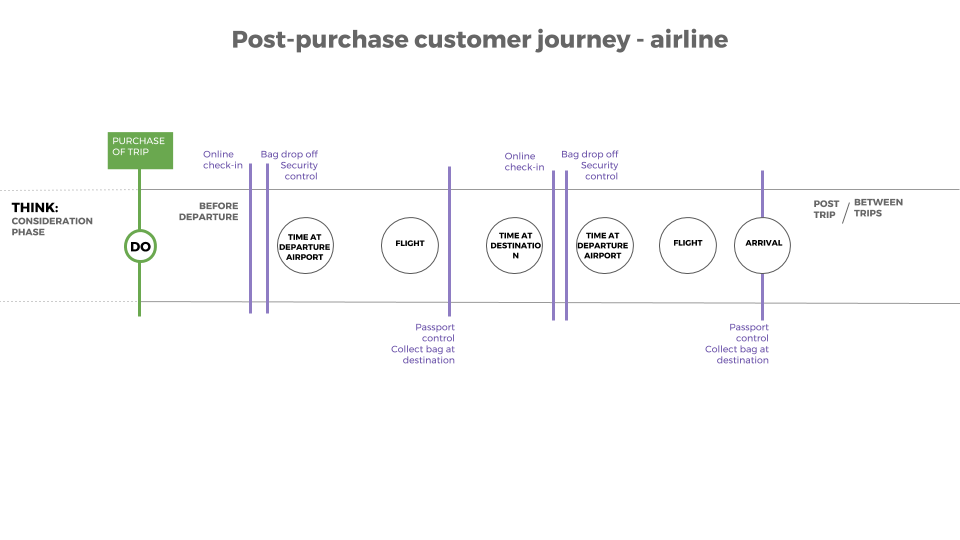
The benefits of open customer journey mapping
I’ve previously written about creating a framework for marketing around a very basic customer journey containing four phases – see, think do and care which is a very basic but very useful in terms of planning marketing and communication focusing on the path to purchase.
Open customer journeys on the other hand, are a more in depth look at specific customer segments actual journey pre and post purchase.
So what do I mean with an open customer journey?
With an open customer journey, I want to emphasise the actual process (outside your company context) that your customer goes through before buying a product or service that you sell. This can and should include before and after a purchase. This process is usually mapped out by a user experience designer after both research, interviews and other insight work is performed to really understand what the customers go through. Before deciding to purchase a specific product or service and to help you stand out by catering for their needs at every touchpoint with your brand.
Why is mapping your customer’s journey useful, how you can use this – and how it will have a positive affect your business bottom line:
- Understand your customer’s behaviour, challenges and pain points
- Understand your customer and know when you can be of service, useful, helpful, informative and inspirational
- Design triggers for marketing automation
- Find insight for target group segmentation
- Find insights for micro-moments
- Find insight for content, communication and marketing creation
- Identify opportunities to improve your service offering, apps, homepage and other touchpoints
- Spot new business opportunities by identifying up and cross-sell possibilities to increase revenue
- Design a better customer experience
- Understand what is important in your customer’s path to purchase
- Understand how you can increase customer loyalty and return purchases within existing customers
To better illustrate this, I’ve created one very basic customer journey for an airline company in this image above. Each target group of customers will have a slightly different customer journey of course. In this case, a leisure travel customer and a business travel customer will have two similar but different journeys.
In the image above, There are “six main events” for the customer in the big circles, which will take most of the customers time. Then we have the purple lines which indicate other important check-points. This is the customers context and what I mean with an open customer journey.
There are plenty of opportunities here, post-purchase, to design a better experience with an airline company. That, however, is it’s very own article.
Photo by UX Indonesia on Unsplash

